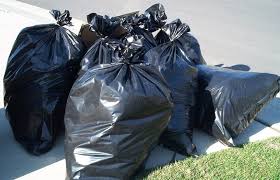Which Is Better for Bagging Groceries: Paper or Plastic?
While bringing your own bag is the most environmentally friendly option for grocery shoppers, you are bound to forget every once in a while.
In those instances, you’ll probably face the question of choosing between a paper and plastic bag. But which one provides the most energy savings?
Plastic bags have a negative stigma attached to them – plastic bags are even banned or restricted in San Francisco and numerous other cities, as well as retail giants IKEA and Whole Foods, often in favor of paper bags.
As it turns out, neither is a sustainable option, but plastic bags require much less material to be made and are easier to recycle than paper.
Understanding the paper vs. plastic debate requires examining the full life cycle of each bag, and the cost to recycle each product. Let’s examine the process of creating both paper and plastic bags.
Get in touchPaper bags not so earth friendly
Paper, of course, comes from trees. According to Ecology.com, about 4 billion trees around the world are used to make paper. Deforestation raises greenhouse gas levels and damages natural ecosystems.
The process of recycling paper can be so inefficient it consumes more fuel than it would take to make a new bag. In order to recycle paper, it must be returned to pulp by adding chemicals to bleach and disperse the fibers.
In order to ensure the strength of bags, most recycled bags are made of mostly virgin wood pulp.
So most likely your recycled bag doesn’t become another bag; at best it becomes corrugated cardboard.
Reuse is the best option
Ultimately, plastic is the better of two bad options. Paper and plastic both have significant carbon and landfill footprints and threaten local ecosystems.
The best course of action is to use and reuse your own shopping bag or shopping crate. These reusable items require more material to make than plastic or paper, so it’s important to place them somewhere where you won’t forget them next time you head to the grocery – or do any shopping.
The lesser of two evils
Plastic bags are made when small pellets of polyethylene (the most common plastic) are heated, stretched and cut into bag shape.
Plastic bag production creates 50 times less water pollution than paper bags. And while plastic requires less energy to recycle than paper, bags need to be taken to specific bag recycling stations, which can be inconvenient if you can’t locate one nearby.
However, plastic bags have a bad reputation for a reason. These light, thin bags are often viewed as expendable and tossed as litter, which can threaten local wildlife that become entrapped in the plastic or mistake it for food









